#European Trade
Text
I went to Oculus just to see where they shot Planet of the Bass







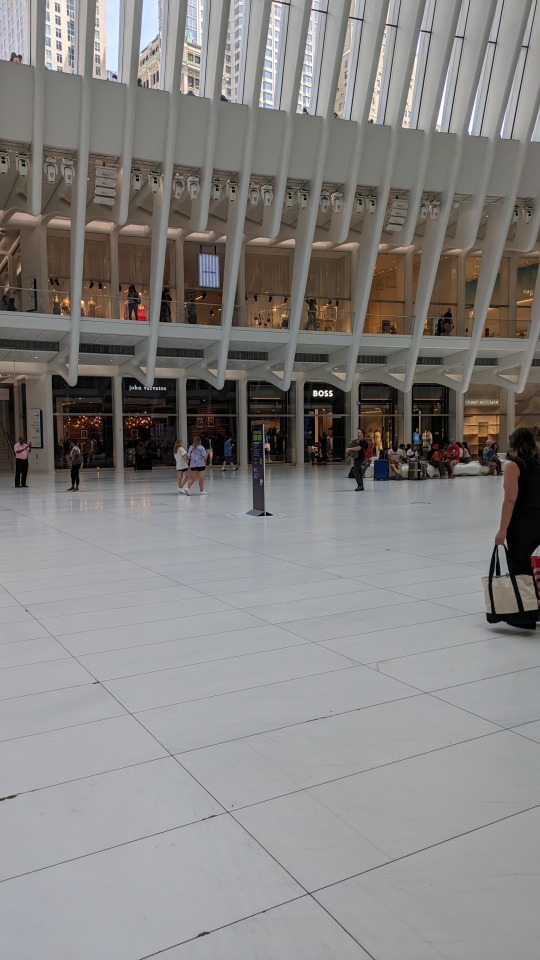


However, I couldn't find the exact spot where they did this overhead shot.

Please let me know where which spot did they shoot this.
#planet of the bass#dj crazy times#women are my favorite guy#all of the dream#how does it mean#when the rhythm is glad#there is nothing to be sad#danger and dance#oculus#westfield#westfield world trade center#world trade center#life it never die#every european dance song in the 1990's
306 notes
·
View notes
Text
Nothing in the past, moreover, gave any cause to suspect ginseng’s presence so far away. Or even closer by: since antiquity, for well over a millennium, the ginseng consumed in all of East Asia had come from just one area -- the northeast mountainous lands straddling Manchuria and Korea. No one had found it anywhere else. No one was even thinking, now, to look elsewhere. The [...] [French traveler] Joseph-Francois Lafitau didn’t know this. He had been [...] visiting Quebec on mission business in October of 1715 [...]. He began to search for ginseng. [...] [T]hen one day he spotted it [...]. Ginseng did indeed grow in North America. [...]
Prior to the nuclear disaster in the spring of 2011, few outside Japan could have placed Fukushima on a map of the world. In the geography of ginseng, however, it had long been a significant site. The Edo period domain of Aizu, which was located here, had been the first to try to grow the plant on Japanese soil, and over the course of the following centuries, Fukushima, together with Nagano prefecture, has accounted for the overwhelming majority of ginseng production in the country.
Aizu’s pioneering trials in cultivation began in 1716 – by coincidence, exactly the same year that Lafitau found the plant growing wild in the forests of Canada. [...]
---
Since the 1670s the numbers of people [in Japan] clamoring for access to the drug had swelled enormously, and this demand had to be met entirely through imports. The attempt to cultivate ginseng in Aizu -- and soon after, many other domains -- was a response to a fiscal crisis.
Massive sums of silver were flowing out of the country to pay for ginseng and other drugs [...]. Arai Hakuseki, the chief policy maker [...], calculated that no less than 75% of the country’s gold, and 25% of its silver had drained out of Japan [to pay for imports] [...]. Expenditures for ginseng were particularly egregious [...]: in the half-century between 1670s through the mid-1720s that marked the height of ginseng fever in Japan, officially recorded yearly imports of Korean ginseng through Tsushima sometimes reached as much as four to five thousand kin (approx. 2.4–3 metric tons).
What was to be done? [...] The drain of bullion was unrelenting. [...] [T]he shogunate repeatedly debased its currency, minting coins that bore the same denomination, but contained progressively less silver. Whereas the large silver coin first issued in 1601 had been 80% pure, the version issued in 1695 was only 64% silver, and the 1703 mint just 50%. Naturally enough, ginseng dealers in Korea were indifferent to the quandaries of the Japanese rulers, and insisted on payment as before; they refused the debased coins. The Japanese response speaks volumes about the unique claims of the drug among national priorities: in 1710 (and again in 1736) a special silver coin of the original 80% purity was minted exclusively for use in the ginseng trade. [...]
[T]he project of cultivating ginseng and other medicines in Japan became central to the economic and social strategy of the eighth shogun Yoshimune after he assumed power in 1716. [...]
---
China and Korea were naturally eager to retain their monopolies of this precious commodity, and strictly banned all export of live plants and seeds. They jealously guarded as well against theft of mature roots: contemporary Chinese histories, for example, record that the prisons of Shenjing (present day Shenyang) overflowed with ginseng poaching suspects. So many were caught, indeed, that the legal bureaucracy couldn’t keep up.
In 1724, the alarming numbers of suspected poachers who died in prison while awaiting trial led to the abandonment of the regular system of trials by judges dispatched from Beijing, and a shift to more expeditious reviews handled by local officials. [...]
Even in 1721. the secret orders that the shogunate sent the domain of Tsushima called for procuring merely three live plants [...]. Two other forays into Korea 1727 succeeded in presenting the shogun with another four and seven plants respectively. Meanwhile, in 1725 a Manchu merchant in Nagasaki named Yu Meiji [...] managed to smuggle in and present three live plants and a hundred seeds. [...]
Despite its modest volume, this botanical piracy eventually did the trick. By 1738, transplanted plants yielded enough seeds that the shogunate could share them with enterprising domains. [...] Ginseng eventually became so plentiful that in 1790 the government announced the complete liberalization of cultivation and sales: anyone was now free to grow or sell it.
---
By the late eighteenth century, then, the geography of ginseng looked dramatically different from a century earlier.
This precious root, which had long been restricted to a small corner of the northeast Asian continent, had not only been found growing naturally and in abundance in distant North America, but had also been successfully transplanted and was now flourishing in the neighboring island of Japan. […]
---
Colonial Americans, for their part, had developed their own new addiction: an unquenchable thirst for tea. […] This implacable need could have posed a serious problem. [...] [I]ts regular consumption was a costly habit.
Which is why the local discovery of ginseng was a true godsend.
When the Empress of China sailed to Canton in 1784 as the first ship to trade under the flag of the newly independent United States, it was this coveted root that furnished the overwhelming bulk of sales. Though other goods formed part of early Sino-American commerce – Chinese porcelain and silk, for example, and American pelts – the essential core of trade was the exchange of American ginseng for Chinese tea. [...]
---
Yoshimune’s transplantation project had succeeded to the point that Japan actually became a ginseng exporter. As early as 1765, Zhao Xuemin’s Supplement to the compedium of material medica would note the recent popularity of Japanese ginseng in China. Unlike the “French” ginseng from Canada, which cooled the body, Zhao explained, the “Asian” ginseng (dongyang shen) from Japan, like the native [Korean/Chinese] variety, tended to warm. Local habitats still mattered in the reconfigured geography of ginseng. [...]
What is place? What is time? The history of ginseng in the long eighteenth century is the story of an ever-shifting alchemical web. [...] Thanks to the English craving for tea, ginseng, which two centuries earlier had threatened to bankrupt Japan, now figured to become a major source of national wealth [for Japan] .
---
Text by: Shigehisa Kuriyama. “The Geography of Ginseng and the Strange Alchemy of Needs.” In: The Botany of Empire in the Long Eighteenth Century, edited by Yota Batsaki, Sarah Burke Cahalan, and Anatole Tchikine. 2017. [Bold emphasis and some paragraph breaks/contractions added by me.]
#all kinds of fun stuff smuggling piracy biogeography medicinal tea shogunates secret orders#the irony of emerging US empire beginning relationship with china based on export of american ginseng which europeans hadnt known existed#the irony of japan quickly transitioning from almost being bankrupted by ginseng to becoming a ginseng exporter#the importance of local habitats and smallscale biogeography despite the global scale of imperial trade#the french cartographer in 1711 in manchuria who had never been to canada but correctly predicted ginseng might grow there#abolition#ecology#imperial#colonial
106 notes
·
View notes
Video
Every time we do some half decent union action in the UK, the French go and do something 10 times better.
Which is to say if you are in a country which still has decent union membership and engagement, don’t let it be eroded!
176 notes
·
View notes
Text



the paradesi synagogue in kochi, kerala, india. the first synagogue on the site, built by the city's longstanding malabari jewish community, was destroyed by portugese who'd colonized the area in their persecution of locals. it was rebuilt in 1568 by spanish and portugese jews who fled persecution and later expulsion, hence the name "paradesi" ("foreign" in malayalam).
these sephardic jews and a community of jews of mixed african and european descent who were formerly enslaved ("meshuchrarim", "freedmen" in hebrew) joined the malabari jewish community of kochi and somewhat integrated. they were later joined by some iraqi, persian, yemenite, afghan, and dutch sephardic jews. the middle eastern and european jews were considered "white jews" and permitted malabari jews and meshuchrarim to worship in the synagogue. however, in what seems like a combination of local caste dynamics and racism, malabari jews were not allowed full membership. meshuchrarim weren't allowed in at all, but were instead made to sit outside during services and not allowed their own place of worship or other communal rights.
as the "white jews" tended to be rather wealthy from trade, this synagogue contains multiple antiquities. they include belgian glass chandeliers on its walls, hand-painted porcelain tiles from china on its floors, and an oriental rug that was gifted by ethiopian emperor haile selassie.
#india#architecture#interior#worship#jewish#sephardic#mizrahi#abrahamic kerala#my posts#this seems like a combo of european racism & s asian casteism but idk anything abt castes so idk how right i am#imo the attitude of the paradesi sephardim sort of echoes what went on w/ portugese & st thomas christians#though they were also influenced by ''jewish racism'' (someone not being an ''authentic'' jew or 100% jewish in lineage)#also its interesting that most paradesi jews who left india went to other commonwealth countries while most malabar jews went to occupied#palestine (for the same reason indian muslims went to pakistan more or less). something something the west's unwanted refugee dumping groun#also i'm not saying the portugese didn't persecute against locals who practiced other religions just that there was a Very Specific type of#persecution st thomas christians and malabari jews faced from them#one more thing: i think most americans dont know (and western europeans like to forget) that the transatlantic slave trade went into#western europe as well. even if most w euro countries outlawed slavery before the us did#and also that ‘white’ has never had a linear definition (yemenites are very not ‘white’-looking to the average american)#its really interesting to me how the sephardim who ended up in w europe or euro colonies ended up being richer and more exclusionary than#balkan or most mena sephardim. probably bc more money = govts get off their backs
43 notes
·
View notes
Text

The island dragon girl Rook 🌊
Art trade with @/Gitogith (from Twitter)
🌊 Follow me:
dashasalty.carrd.co/
#artists on tumblr#art#painting#illustration#digital art#digital painting#digital illustration#dragon#dragon art#european dragon#western dragon#sea#oceancore#ocean#art trade
19 notes
·
View notes
Photo

Jean-Léon Gérôme (French, 1824 - 1904)
Femmes au bain, 19th century
-
Slavery gave rise to the figure of the Odalisque, that is the beautiful, white slave girl, a figure of quintessential beauty.
In the late 18th century Johann Friedrich Blumenbach, the father of physical anthropology, the father of scientific anthropology, an 18th century German scholar, assigned the name Caucasian to the people living in western Europe, to the River Ob in Russia to northern Africa, and to India. He called the people in Europe, over to India, well into Russia and North Africa, Caucasians because they were the most beautiful in the world. Blumenbach enjoyed a scholarly reputation that gave his designation enormous heft and it got picked up very quickly.
Immanuel Kant stated that the Caucasians, the Georgians, the Circassians, sell their children, particularly their girls to the Turks, the Arabs, and the Persians, for reasons of eugenics, that is, to beautify the race. The idea of the beauty of Caucasians is linked with the idea of the slavery of Caucasians. Before the Atlantic slave trade to the western hemisphere shaped our ideas about what slave trades are all about, there was slave trade from this part of the world, that goes back to before the reaches of time.
Herodotus writing in the fifth century BC, writing about the enumeration of taxes and tributes paid to the Persian kingdom, collected from the lands it had controlled and the lands even far away in the distance. He said that the voluntary contribution was taken from the Colchians, that is the Georgians, and the neighboring tribes between them and the Caucasus, and it consisted of and still consists of (that is in the 5th century BC) every fourth year 100 boys and 100 girls. This was before Herodotus could even see the beginnings of it. Herodotus also mentioned the tribute from the southern most part of the edges of the Persian world and that was for the people called Ethiopians, what they owed was gold and ivory, people were not mentioned. So, the Black Sea Slave trade was the slave trade in the western world until the 15th century when the Ottomans captured Constantinople and cut the Black Sea off from western Europe. At that point, 15th century, the Atlantic slave trade becomes the western slave trade.
Daniel Edward Clarke, our Cambridge don, also located Circassian beauty, in the enslaved. “The Cicassians frequently sell their children to strangers, particularly to Persians and Turkish Seraglios.” He speaks of one particular Circassian female who was 14, who was conscious of her great beauty, who feared her parents would sell her according to the custom of the country. The beautiful young slave girl became a figure, and she had a name; Odalisque. She combines the powerful notions of beauty, sex, and slavery. Ingres, Jerome, Powers and Matisse specialized in Odalisque paintings.
The figure of the Odalisque faded from memory as the Black Sea slave trade ended in the late 19th century, and the Atlantic slave trade overshadowed that from the Black Sea. Today, the word slavery invariably leads to people of African descent. Americans seldom associate the word Odalisque with with slavery in the Americas. Today many American painters use Odalisque figures, Michalene Thomas for instance who has done a series of what she calls American Odalisque. But the phrase and the figure of the Odalisque has lost its association with slavery. And now in American art history and in contemporary American art, Odalisque simply refers to a beautiful woman, usually unclothed.
If you want to learn more, listen to professor Nell Painter of Princeton University in the YT lecture “Why White People are Called Caucasian.”
#Jean-Léon Gérôme#Gerome#art#french art#france#french#Femmes au bain#white slaves#black sea slave trade#europe#european#europa#fine arts#world history#caucasian
46 notes
·
View notes
Text

The ensemble of knightly arms. ⚔️⚜️
#knight#chivalry#longsword#cavalier#arming sword#spear#lance#axe#polaxe#poleaxe#HEMA#fencing#historical european martial arts#tools of the trade#weapons for a squire#weapons for a knight#medieval weapons#medieval sword#knightcore aesthetics#knightcore#paladin#fighter
378 notes
·
View notes
Text
Lula trashes EU side letter, says WTO "ended"

President Luiz Inácio Lula da Silva on Friday called an EU-proposed side letter to the free trade agreement with Mercosur a “threat,” said the World Trade Organization (WTO) has “ended,” and renewed calls for new international institutions and reform of those mostly designed by Western powers in the 1940s, such as the United Nations and the International Monetary Fund.
At the Summit for a New Global Financing Pact in Paris, Lula said trade agreements must be “fairer.”
“I’m dying to make a deal with the European Union. But it is not possible”, he said, referring to the proposed EU-Mercosur free trade agreement. Earlier this year, EU negotiators presented a side letter that allows for sanctions if countries fail to meet environmental commitments under the Paris Agreement. Mercosur members are expected to present a counter-proposal in the coming weeks, with the aim of signing the agreement by the end of the year.
Lula added that the World Trade Organization (WTO) has “ended.” The last round of WTO-led negotiations, the Doha Round, began in 2001 and was never completed.
Continue reading.
#brazil#politics#brazilian politics#luiz inacio lula da silva#europe#european union#european politics#international politics#world trade organization#foreign policy#mercosur#economy#mod nise da silveira#image description in alt
43 notes
·
View notes
Text
Forget 'Walking The Plank.' Pirate Portrayals—From Blackbeard to Captain Kidd—Are More Fantasy Than Fact.
How we think famous swashbucklers walked, talked, and dressed didn't come from the history books, so where did these pirate myths come from?
— By Jamie L. H. Goodall
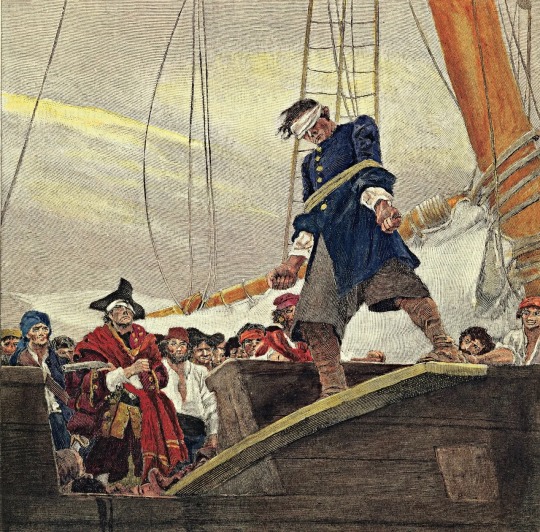
An illustration from 19th-century artist Howard Pyle depicts a man being forced to walk the plank. Although there is no record of this type of punishment, it remains popular in pirate mythology. Photograph By Image Courtesy of Bridgeman Images
Say “pirate,” and people envision grizzled men with eye patches, parrots, and treasure maps. They picture buccaneers forcing their victims to walk the plank, and crying “Shiver me timbers” as they fly the Jolly Roger flag. It turns out, many of these stereotypes are not true. Pirates have been around for nearly as long as people have sailed the world’s waters, and, in fact, still exist. It’s just how they’ve been depicted that’s often misleading. So where did these misinterpretations come from?

A replica pirate ship cruising the Caribbean Sea near the Dominican Republic. Photograph By Thomas Grau, Alamy Stock Photo
Pirate Fashion
Pirates are commonly portrayed wearing colourful attire. He may sport as a loose-fitting shirt with a bandana around his head, a scarf around his waist, ripped pants, wearing tattered boots, like Captain Jack Sparrow from the Pirates of the Caribbean film series. Or he may appear a bit foppish, much like Stede Bonnet, the "gentleman pirate" in the 2022 series Our Flag Means Death.
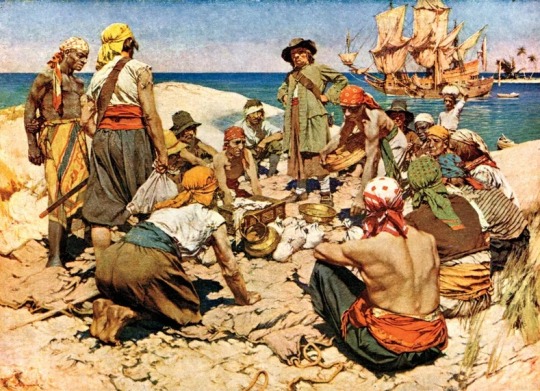
Common pop culture depictions of pirate garb, as shown here in this early 20th century artwork, are often based on fanciful descriptions of their attire and language. Photograph By Image Courtesy of Bridgeman Images
Unfortunately, these looks are just not true. Much of this ostentation came from American artist Howard Pyle, who took his inspiration from Spanish bandits of the late 19th century. Sailors in the 18th century, pirates included, wore things such as loose pants cut off at the knee and thigh-length blouses.
Prosthetic limbs are another common pirate trait. It’s true some pirates had a wooden leg or hook hand, though it probably wasn’t the norm. More often than not, amputations at sea were likely a death sentence. While ships carried medicine chests, and medical care was often meted out by someone on the crew, infection and blood loss could lead to death. Even if a pirate survived an amputation, his ability to fight would be limited. But losing a limb didn’t mean one could not continue on the ship; the person might serve the crew, for instance, as a cook.

Many pirate clichés stem from the 1950 film 'Treasure Island,' featuring Robert Newton as the fictional pirate Long John Silver. Photograph By United Archives GMBH, Alamy Stock Photo
Pirate Talk
Common pirate phrases—such as Arrrrr me mateys!” and “Shiver me timbers!”—are common in pirate movies and pop culture. But they’re not legitimate things a pirate would actually have said. Robert Louis Stevenson imagined some of them for his 1883 novel Treasure Island, published more than 150 years after the “golden age” of piracy.
The trope of talking like a pirate is mostly a product of 20th-century Hollywood. In particular, British actor Robert Newton, who played both Blackbeard and Long John Silver. His portrayal of the fictional captain in the 1950s rendition of Treasure Island used an exaggeration of his own West Country accent and would define the sound of a pirate's accent. His portrayal also popularised many of the sayings associated with pirates today. In reality, pirates most probably spoke in a manner similar to all sailors of the time.
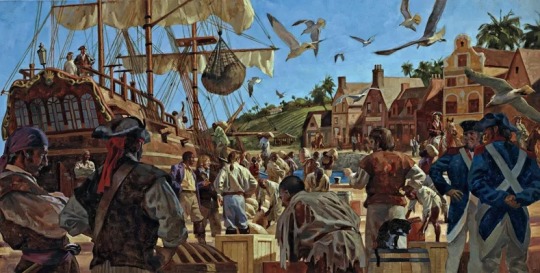
An artist imagines the often-willing markets pirates found throughout the Atlantic world for their stolen loot. Transatlantic trade was critical for the success of European colonies. Photograph By Gregory Manchess
Treasure, Buried or Otherwise
Captain Kidd may have buried his treasure, but that was a rare exception for most pirates. Typically, they spent their ill-gotten gains on women and alcohol at pirate-friendly ports as quickly as they could. Burying treasure would be dangerous due to shifting sands and tides, so one might easily lose their treasure. And there was a distinct lack of trust, not knowing if others might deceptively go back to dig up the treasure on their own.
Also, much of the loot pirates collected was not in the form of silver or gold. Such treasure would have been difficult to come by. The more common "booty" would have been whatever goods or commodities they could get their hands on, including timber, furs, silks, cotton, spices, and medical supplies. They also loaded up on items to perform necessary repairs on their ships, including cable, rigging, and sails.

Top Left: A gold bar and coins recovered from the Spanish galleon 'Las Maravillas' that wrecked in 1656 near the Bahamas. Photograph By Jeff Rotman, Nature Picture Library, Alamy Stock Photo Top Right: Prized Spanish coins, or pieces of eight, recovered from the wreck of the 'Whydah Gally'. Photograph By Zuma Press Inc., Alamy Stock Photo Bottom: Wooden treasure chests were typically studded with metal to reinforce them. Photograph By Andyroland, IStock, Getty Images
Pirate Codes
There is evidence that many pirate crews adopted a code of honour or articles of agreement, mostly to keep order on board the ship. These codes dealt with everything from how to divvy up loot, to what happened to pirates if they became injured in the line of duty, to how bad behaviour would be dealt with, to how prisoners would be treated. Some pirate articles have survived to this day, including the code of Englishman George Lowther and his crew, which, for example, compensated a person who lost a limb during a skirmish.

The 1724 articles of Captain John Phillips of the 'Revenge' discuss matters such as theft on board the ship and compensation for limbs lost during battle. Photograph By British Library Board. All Rights Reserved, Bridgeman Images
If a pirate violated the code, it is unlikely they were made to "walk the plank." Little to no historical evidence exists to support that practice, which was largely pulled from fiction, including Treasure Island. If victims were punished in some way, it was typically via keelhauling. Keelhauling was arguably a more hideous fate that involved an individual being tied to a rope and dragged under the ship. Victims of keelhauling either died by bleeding out from injuries inflicted by barnacles on the hull of the ship or by drowning. Other forms of punishment ranged from being thrown overboard to being lashed to being marooned on a desert isle.
Pirate Ships 🛳️ 🚢
Most pirates did not sail Spanish galleons, or even the frigates such as Captain Jack Sparrow’s Black Pearl. They favoured small, more manoeuvrable vessels, which allowed easy escape from larger warships that chased them. During the 16th and 17th centuries, sloops were the most common choice for pirates. They were quick and had a shallow draft, making easier escape into shallow waters. Schooners were another favourite of pirates. Similar to sloops, schooners were fast, simple to manoeuvre, and could easily hide in estuaries because of their shallow draft.

Top: A replica of the 17th-century Spanish galleon 'Neptune'. Photograph By Volodymyr Dvornyk, Shutterstock Middle: A crew raises the anchor from what is believed to be the remains of the pirate Blackbeard’s flagship, 'Queen Anne’s Revenge.' It was discovered in Beaufort Inlet, in Carteret County, North Carolina. Photograph By AP Photo, Robert Willett, The News & Observer
Bottom Left: The National Museum of the Royal Navy in Hampshire, England, displays a Jolly Roger that once belonged to Admiral Richard Curry, who seized it from pirates off the North African coast in 1790. Photograph By Andrew Matthews, Getty Images Bottom Right: Coves, such as this one near Bridgetown, Barbados, would have made perfect hideouts for pirates. Photograph By Fabio Mauri, Eyeem, Getty Images
And, despite popular myth, most pirates did not fly the famous Jolly Roger—a skull and crossbones symbol on a black flag. Some flew a black flag, which meant the pirate was willing to give quarter, while a red flag meant blood and certain death. Blackbeard’s flag showed a skeleton holding a spear pointing at a bleeding heart. Pirate crews also often held the flags of several different nations so they could raise a particular flag to signal being “friendly” to a passing ship, only to raise their pirate flag once they were in close enough range to attack said vessel.
Pirate Fights
One thing that most of the pop culture depictions of pirates got somewhat right is that they liked versatile weapons. Cutlasses, short swords with a slightly curved blade, could be used to effectively fight in the confined areas of a ship and could also be used to butcher meat.

Top: Bar shot were common tools for pirates, who used them at close range to destroy the rigging and sails of enemy ships. Due to the weights on either end of the bars, they would spin uncontrollably after being fired from a cannon. Bottom: This musket’s barrel and stock were cut down, likely so a pirate could more easily use it in close combat. Photographs By Kenneth Garrett
Pirates also enjoyed using a gun known as a blunderbuss. It had a distinct flared muzzle that sprayed small lead balls at intended victims. Cannons were also common onboard pirate ships. They could be loaded with chain shot (two cannonballs chained together), grapeshot (small cannonballs), or basic cannonballs. Their targets often didn’t stand a chance.
While books, movies, and popular culture may have taken liberty with descriptions of pirates through the ages, these pillagers have terrorised the seas for more than 2,000 years in one form or another, plundering victims and striking fear into their hearts. The most recent pirates work off the coasts of Somalia and Malaysia, looking far different from the “golden age” of piracy depictions. But one thing remains true: They are just as intimidating.

The 18th-century painting 'Anne Bonny, Female Pirate' by Fortunino Matania depicts Anne Bonny and an accomplice taking two sailors prisoner. Photograph By Image Courtesy of Historia, Shutterstock
#Culture | History#Pirate Portrayals#Blackbeard | Captain Kidd#Fantasy | Fact#Pirate Mythology#Pirate Ship 🛳️ 🚢#Pirate Garb#Fanciful | Descriptions#Attire Language#Treasure Island#Transatlantic Trade#European Colonies#Bahamas 🇧🇸
8 notes
·
View notes
Text
funniest historical posts are those that are like misconception! (era/region) people actually *something that was only available to the higher class*
#like. medieval europeans didnt just eat slop and gruel but acting like high quality meat and exotic trades and spices were available#and affordable to the average peasant is um..#same w textiles dyes and so on
35 notes
·
View notes
Text

My side of a trade with 01_ReihanehDraw on twitter!
#my art#illustration#digital drawing#digital art#digital illustration#fairy tales#fairy tale aesthetic#little red riding hood#papa wolf#European#western europe#kemonomimi#animal ears#kemono#fake screenshot#dad of the year#art trade#anthro#furry#furry oc#wolf#anthro wolf
10 notes
·
View notes
Text
I totally understand that having 3 races in 1 country seems excessive, and I definitely think that if they want as many races in the US as they do, F1 should at least do cool tracks (like Indianapolis) but I wanna point something out
the distance between Hungary to Spa to Zandvoort is 1,526km
in comparison Miami to Austin to Las Vegas is 4,247km
if I lived in Hungary, it would be faster for me to get to the Belgium Grand Prix than it is for me, a Floridian, to get to the Austin Grand Prix
If F1 wants to grow their fan base in America, it needs to make it accessible (which, even though we have 3, it still fucking isn't). There are definitely problems with the US races but I don't think the amount is one of them.
#im willing to trade miami and las vegas#if europeans are willings to trade 3 of their 9 races#put one in south africa maybe#another one in south america#have at least one on each continent#formula 1#f1#formula one#las vegas grand prix#united states#motorsport
12 notes
·
View notes
Text
interesting new take i just saw: goblins aren't antisemitic caricatures because european folklore has featured goblins since before europeans first made contact with jewish people (incorrect)
#judaism predates european folklore featuring goblins by at least a COUPLE THOUSAND years.#do you really think there was NO CONTACT during that time??#this isn't speculation btw it's very easy to look up trading routes and human migration patterns#as well as the spread of religions. like. they Absolutely had contact with each other
57 notes
·
View notes
Text
Oh look . All of my favorite War Boys are here to entertain me
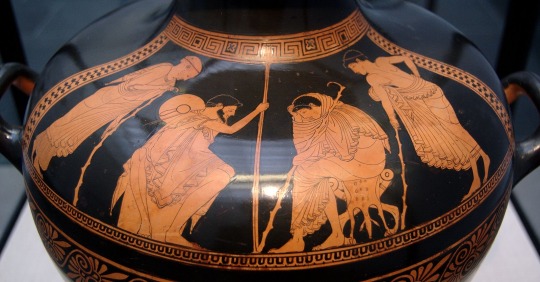
#this is the embassy to achilles by the cleophrades painter#from btw 505-475 bce#i wish i could give a better estimate but attic red figures r far from my expertise lol#sadly i am just an early modernist lol#image#odysseus#big ajax#phoenix#speaking of art tho. i put it on main also in tags cause when i make posts they r required to be stupid#so im always gonna be candid in tags instead#but!! i got into grad schools!! and im gonna get my mst at oxford next year!!#the opportunity is amazing. and it opens so many doors in terms of accessing european archives#esp since a lot of what i wanna do is print and painting history and analysis and transnational exchange#in these burgeoning trade networks#but yes very happy rn :3#and then once that tenure ends we will see where the road leads#hope yall r doing well
48 notes
·
View notes
Text

🇪🇺🇷🇺 🚨 TRADE BETWEEN THE EU AND THE RUSSIAN FEDERATION DOWN 37% SINCE FEBRUARY 2022
According to German news agency Der Spiegel, a study by the IFO Institute has found that European Union exports have fallen 37% since the start of Russia's Special Military Operation in Ukraine, which began on Feb. 24th, 2022.
"One reason for the still high export volume to Russia is that only 32 percent of all products from the EU are sanctioned," Feodora Teti, the Deputy-chief of the IFO Institute's Center for Foreign Trade, said on Tuesday.
"For luxury goods, for example, the export of champagne to Russia is sanctioned, but not Prosecco," Teti said.
Recent evaluations of IFO's new sanctions database suggest many of the sanctioned goods can be delivered to the Russian Federation indirectly via third countries.
"For Russia, China is the most important alternative country of origin for sanctioned products: 61 percent of these goods come from China," Teti added.
Prior to the war in Ukraine, that proportion was only 35%. Currently, 13% of all goods sanctioned by Western countries enter Russia via Turkey, while less than 1% arrives via Armenia. During the same period, EU exports to Armenia doubled.
#source
@WorkerSolidarityNews
#european union#eu#eu news#europe#europe news#european news#russia#russian federation#russia news#russian news#russian economy#germany#germany news#german news#eu politics#eu trade#eu economy#eu economics#politics#news#geopolitics#world news#global news#international news#breaking news#current events#trade#economy#economics#economy news
9 notes
·
View notes
Photo
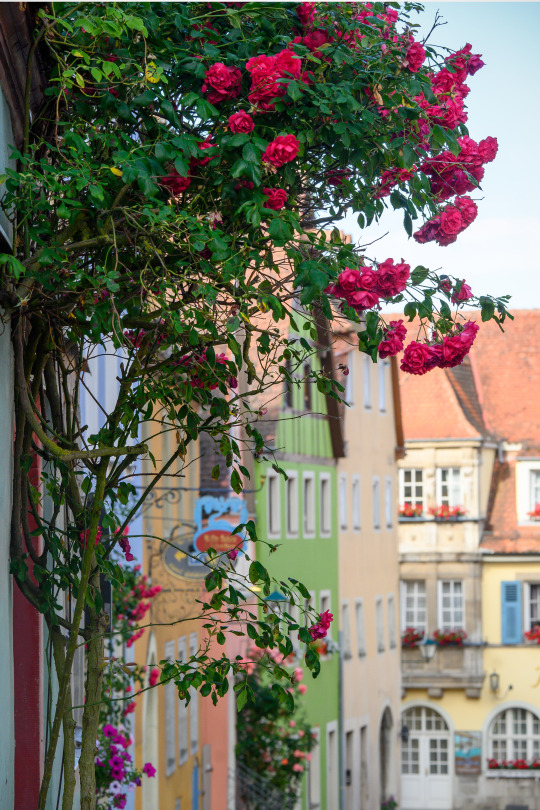
When was the last time you did something for the first time?
Photo: Rothenburg ob der Tauber, Germany
#germany#deutschland#bavaria#bayern#rothenburg#rothenburg ob der tauber#europe#historic europe#european charm#fairy tale village#flowers#travel#tourism#explore#adventure#european union#eu#international travel#vacation#world trade organization
52 notes
·
View notes